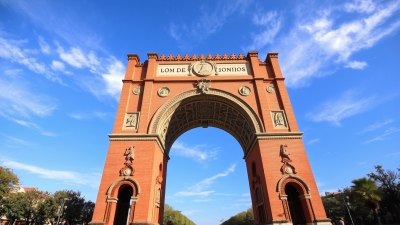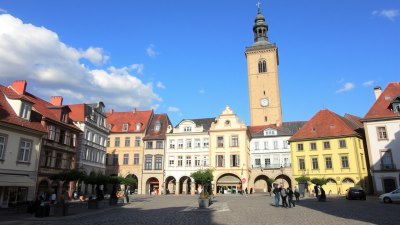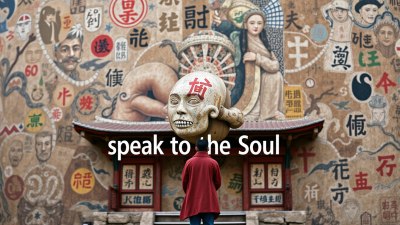The Arc de Triomf in Spain Opens Into Memory, Not Victory
Explore the cultural significance of the Arc de Triomf in Spain, a symbol of memory rather than victory.

Image created with Flux Schnell
The Arc de Triomf, located in the vibrant city of Barcelona, stands as a remarkable monument that diverges from the traditional representation of triumph found in similar arches around the world. Initially constructed as the main entrance to the 1888 Barcelona World Fair, this iconic structure embodies more than just a triumphal statement; it invites visitors into a space of reflection and memory.
Historical Context
Commissioned by the architect Josep Vilaseca i Casanovas, the Arc de Triomf was built in a Moorish revival style, characterized by its reddish bricks and ornate decorative details. Unlike many triumphal arches that celebrate military victories, the Arc de Triomf opens into the heart of Barcelona, embodying the city’s commitment to culture, art, and societal values. This construction heralded not victory but an invitation to experience the progress and forwardness of Barcelona during the late 19th century.
Architectural Features
The Arch is adorned with intricate sculptural reliefs that depict the city’s allegorical representations of industry, agriculture, trade, and arts. Beneath the archway, the emblematic statue of a young woman represents the spirit of the world fair and the harmonious relationships that connect people through cultural exchange. The brickwork and the red hues reflect the earthiness of the surrounding landscape, making it a true representation of the city itself.
Cultural Significance
Over the years, the Arc de Triomf has evolved into a symbol of cultural identity and civic pride for the people of Barcelona. It serves as a gathering point for locals and tourists alike, acting as the backdrop for various events, parades, and celebrations, reflecting the city’s dynamic spirit. While it stands as a historical milestone, it is also a significant locale for social events, including the popular La Merce festival and other local festivities.
Connection to Memory
The essence of the Arc de Triomf transcends its physical structure. Unlike other arches that often commemorate militant conquests, it serves as a reminder of history and community solidarity. Visitors who pass through the arch are invited to reflect on the passage of time, continuity, and change in Barcelona. It stands as a testament to collaboration, showcasing the triumph of the human spirit, innovation, and artistic endeavors.
Visitor Experience
For visitors arriving at the Arc de Triomf, the experience is often spellbinding. As one approaches the arch, the impressive structure towers above, drawing admiration and curiosity. The surrounding area, particularly the Paseo de Lluis Companys, offers a beautiful promenade lined with palm trees, cafes, and street performers, creating a vibrant atmosphere. Tourists often take the time to sit in the nearby park, reflecting on the significance of the arch and the city it represents.
Artistic Reflections
Artists and photographers have long been inspired by the Arc de Triomf, using it as a subject for their works. From paintings that capture the architectural details to photographs that freeze in time the fluid movements of city life, the arch encapsulates a variety of artistic interpretations. Many locals express their pride and affection for the monument, often participating in art festivals that celebrate creativity and community.
The Arc de Triomf in Barcelona remains a poignant symbol of memory, culture, and community connection, a living testament to the city’s rich history. As it opens into the heart of Barcelona, it continues to resonate with all who encounter its grandeur. Serving as a reminder that even in a time of rapid change, there exists a consistency in remembering who we are, the Arc de Triomf encapsulates a lasting legacy centered on heritage rather than singular victories.











